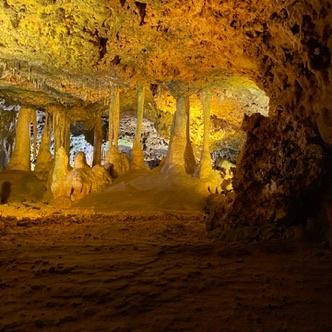Are there particular times of year when visiting Mallorca’s geological sites is less damaging to the environment?
Similar Topics
mallorca geological sites
shoulder seasons travel
eco-friendly tourism
spring visitation mallorca
autumn travel mallorca
reduce environmental impact
sustainable tourism mallorca
karst landscapes preservation
Visiting Mallorca’s geological sites during the shoulder seasons of spring (April to June) and autumn (September to November) is generally less damaging to the environment compared to the peak summer months. During these periods, the influx of tourists is significantly reduced, which lessens the strain on fragile ecosystems, including soil, vegetation, and native wildlife. A lower number of visitors means less erosion, reduced litter, and diminished disturbance to natural habitats, allowing delicate geological formations and surrounding flora to remain intact. Additionally, the climate in these months tends to be milder and more comfortable, encouraging slower-paced exploration that minimizes hurried trampling or off-trail excursions which can harm sensitive areas.
Avoiding visits during the height of summer is beneficial not only because of the environmental pressures but also due to harsher weather conditions that can increase erosion through more frequent wildfires and drying of the soil. During the rainy winter months, while there are fewer tourists, some geological sites may become vulnerable to damage from soil saturation and increased runoff. However, these times are generally less frequented, so the low foot traffic balances the natural wear on the terrain. Careful attention to staying on marked paths and respecting conservation guidelines throughout the year further reduces the environmental impact of visitors.
By planning trips in the shoulder seasons and being mindful of environmental practices, travelers can enjoy the stunning geological wonders of Mallorca while contributing to their preservation. Mallorca’s unique karst landscapes, impressive caves, and dramatic cliffs benefit greatly from thoughtful tourism that prioritizes sustainability over convenience. This approach helps ensure that the island’s natural heritage remains unspoiled for future generations to study, appreciate, and enjoy.
Avoiding visits during the height of summer is beneficial not only because of the environmental pressures but also due to harsher weather conditions that can increase erosion through more frequent wildfires and drying of the soil. During the rainy winter months, while there are fewer tourists, some geological sites may become vulnerable to damage from soil saturation and increased runoff. However, these times are generally less frequented, so the low foot traffic balances the natural wear on the terrain. Careful attention to staying on marked paths and respecting conservation guidelines throughout the year further reduces the environmental impact of visitors.
By planning trips in the shoulder seasons and being mindful of environmental practices, travelers can enjoy the stunning geological wonders of Mallorca while contributing to their preservation. Mallorca’s unique karst landscapes, impressive caves, and dramatic cliffs benefit greatly from thoughtful tourism that prioritizes sustainability over convenience. This approach helps ensure that the island’s natural heritage remains unspoiled for future generations to study, appreciate, and enjoy.
🧩 Related Questions
Related Question
What impact did working as maids or nannies have on the lives of young girls in Mallorca?
Related Question
What aspects of Mallorcan architecture reveal the island's colonial past?
Related Question
Are there guided hikes or outdoor activities in Mallorca that focus on locations used in films?
